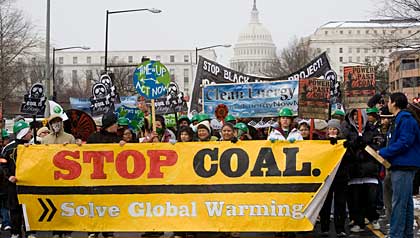AARP Hearing Center


Directed by Bill Haney
Rated PG, Runtime: 95 mins.
Stars: Robert Kennedy Jr.
“Mountaintop removal” is a phrase that, to the uninitiated, sounds like nonsense. The top is the only part of a mountain anyone really sees or remembers. That iconic Paramount Pictures logo is a snowy mountain peak — not a sawed-off stump. Mountaintop removal? Why would anyone want to do that?
The Last Mountain, a haunting documentary that chronicles the mining industry’s ongoing quest to extract every last piece of coal from the Appalachian Mountains, has the answer to that question, and it’s a painfully obvious one: money. The movie centers on the plight of the residents of West Virginia’s Coal River Valley as they try to stop the practice of mountaintop removal, in which a mountain’s peak is blasted away by dynamite in order to extract the precious coal layered underneath.
Like any respectable piece of agitprop filmmaking, The Last Mountain is less a movie than a polemic. Director Bill Haney unapologetically offers no nod toward impartiality. He’s on the side of the residents who are choking on the toxic dust from the mountains being bombed all around them — and, at least in one trailer park, dying of brain tumors at an abnormally high rate. And, after Haney skillfully opens the film with dramatic footage of titanic blasts that seem to suck the picturesque mountain peaks right into the earth below, there likely won’t be many in the audience ready or willing to listen to the excuses of the mining industry.
The movie is at its best when it focuses on the locals affected by those constant blasts — a woman whose groundwater has been tainted by the runoff from the mountains (the image of her well filter, brown and corroded after only a week’s time, is hard to shake); a man crusading for a new elementary school to replace the one his granddaughter attends, which sits next to a coal processing plant and a lake of sludge; a miner who routinely puts in 16 hours a day toiling underground and after 30 years still makes just $15 per hour for his efforts.


































































More on Entertainment
Your Ultimate Guide to This Summer’s Best Movies
Don't miss these upcoming films in theaters and streamingThe 20 Movies We Can't Wait to See in 2023
Get ready for Barbie, Indiana Jones, John Wick, Magic Mike and more
Complete List of AARP’s Movies for Grownups Winners 2023
Brendan Fraser, Michelle Yeoh and Jeff Bridges are among the honorees